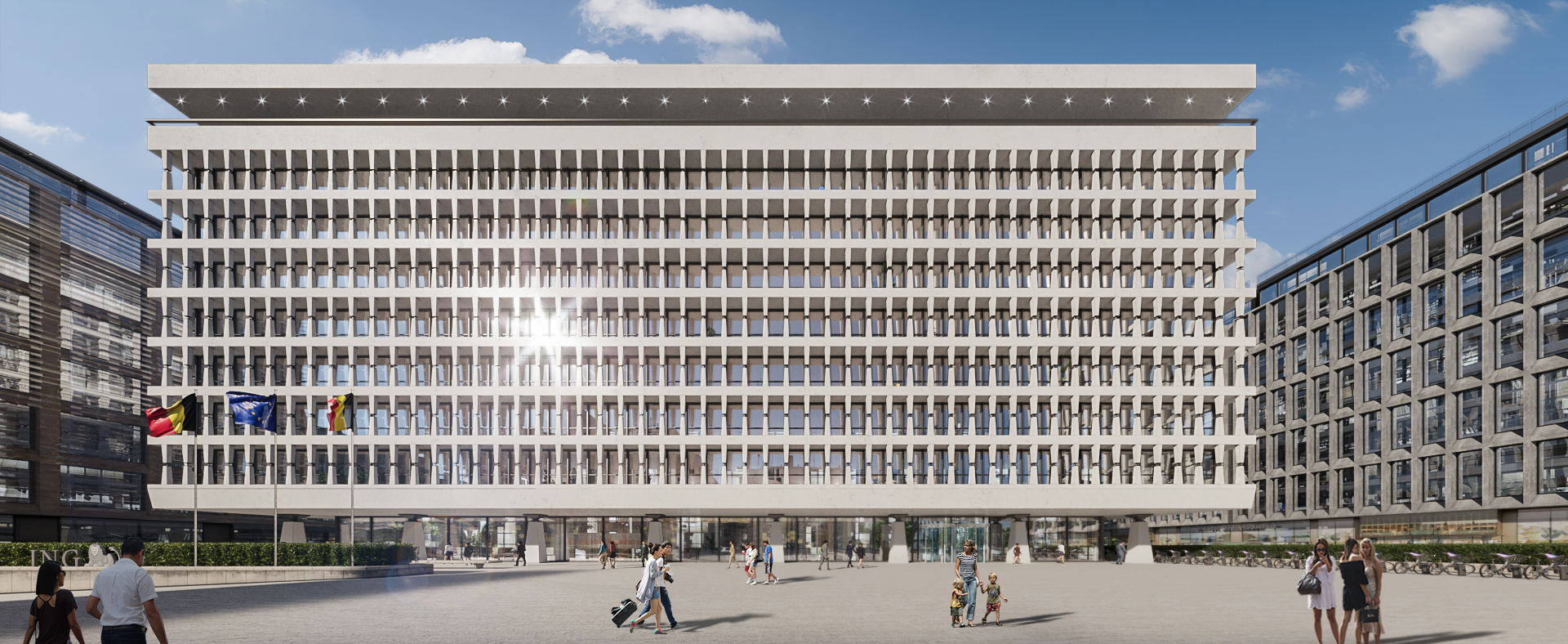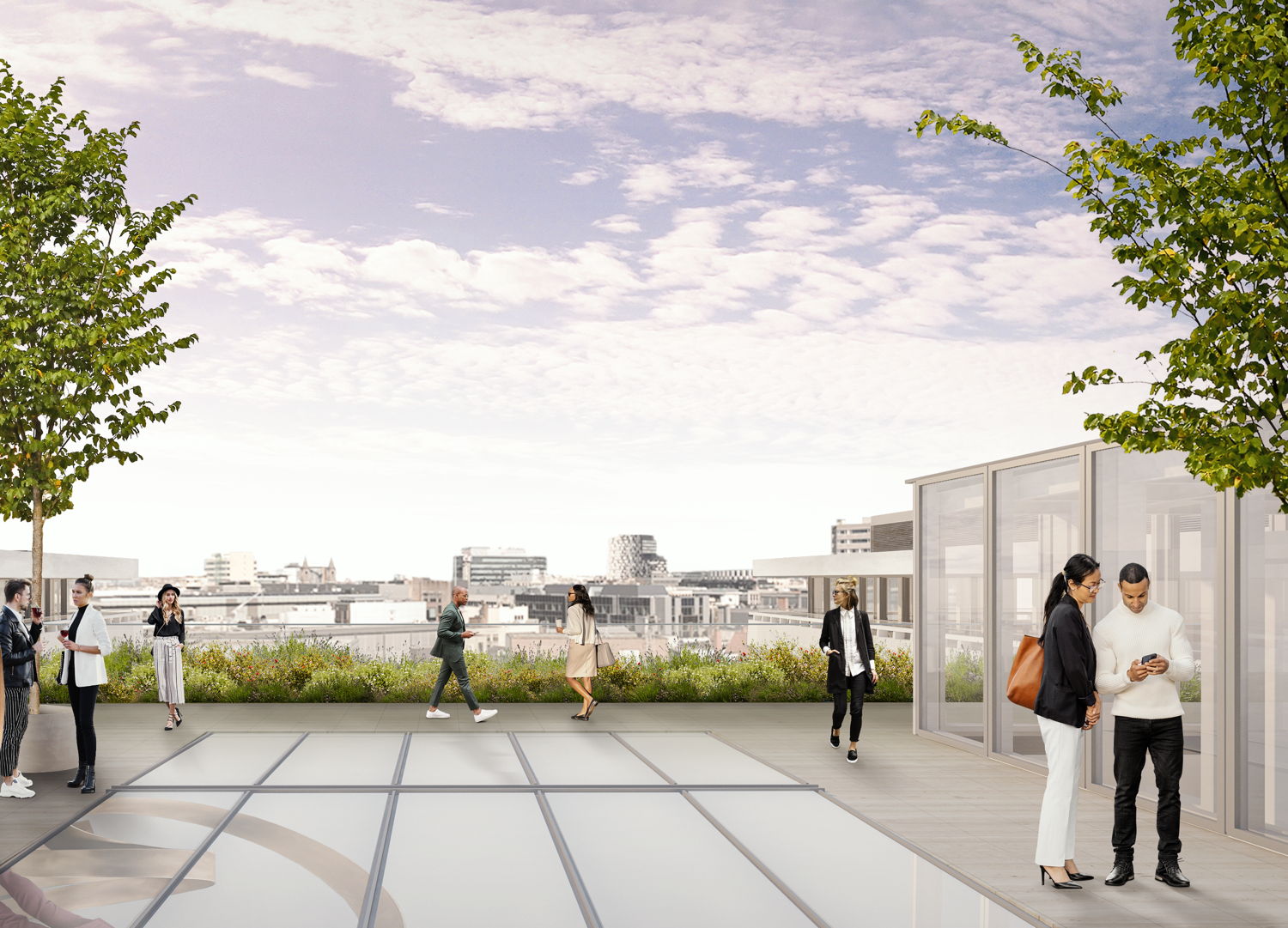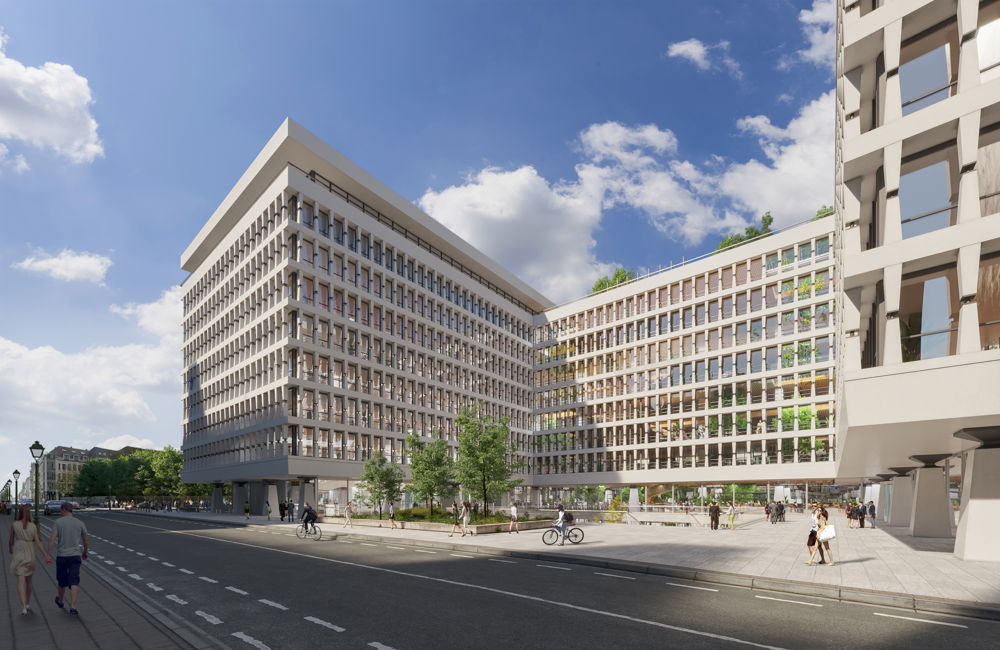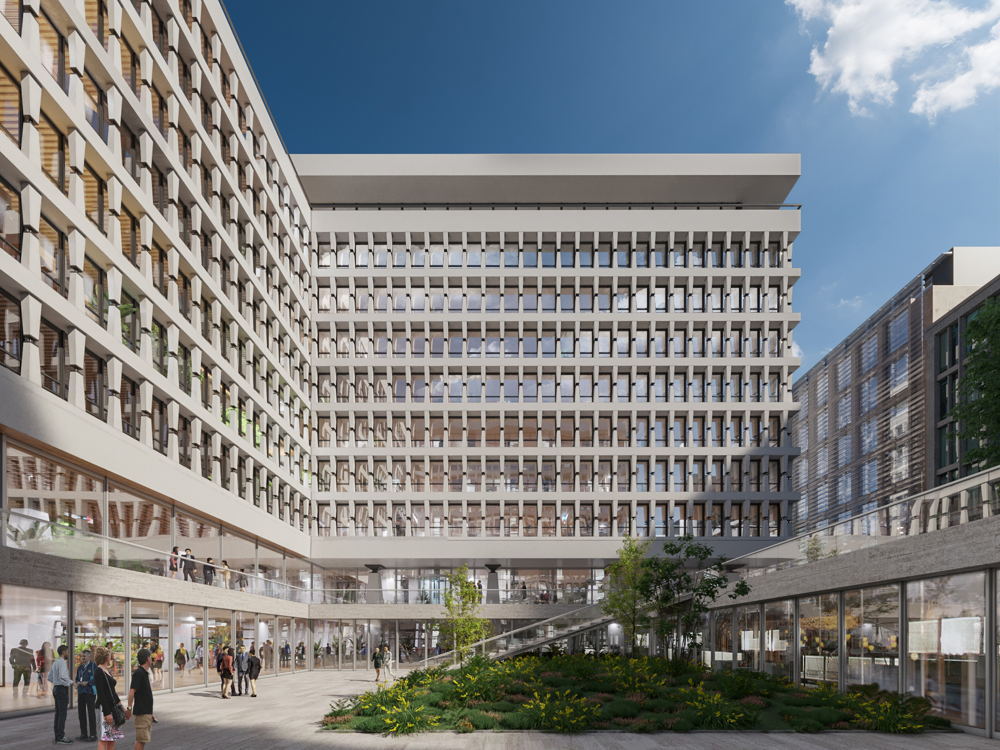Mapping, protecting, renovating ... How will Brussels deal with its rich postwar architecture in the future?
Presentation strategy of the Brussels Region to protect postwar architecture with the ING Marnix-building as an example
Brussels, 18 May 2022 - Pascal Smet presents his strategy to inventory and protect postwar architecture The Brussels Region has granted a building permit for an ambitious renovation of ING’s iconic modernist headquarters on Avenue Marnix
Currently, Brussels pursues a very active heritage policy for Art Nouveau and Art Deco buildings. But unfortunately, these architectural styles have not always been respected in the past, when several gems of renowned architects were disregarded or even demolished. Victor Horta’s Maison du Peuple is perhaps the most famous example of this, but there are also many great examples after World War II, such as the many modernist buildings in our capital. The latter are not (yet) appreciated by everyone and are sometimes even threatened with demolition.
To prevent Brussels from repeating past mistakes, Brussels State Secretary for Urbanism and Heritage Pascal Smet has today presented his strategy to map out, protect and give new life to iconic postwar architecture.
We are making exceptional efforts in Brussels to protect and renovate our classic architecture. Today, we are the world capital of Art Nouveau, a title that we deserve. I would now like to repeat this major effort for our postwar architecture. We have, for example, many modernist buildings that not everyone likes today, but we are developing a targeted strategy to inventory, classify and renovate. In this way, we will avoid making new historical mistakes, such as the demolition of Horta buildings after World War II.
Pascal Smet, Brussels State Secretary for Urbanism and Heritage
It is no coincidence that the Brussels Region’s strategy was presented in the Marnix building. This iconic modernist ING headquarters on Avenue Marnix has received a building permit from the Brussels Region for an ambitious renovation project. The building, designed in the 1950s by Gordon Bunshaft, has been on the Brussels heritage preservation list since 2021. It is one of the only works of Gordon Bunshaft in Europe. After having served as BBL-headquarters, it was acquired by ING. A2M - Moreno Architecture designed the ambitious renovation project. No doubt the renovated building will become a worldwide showcase for the combination of heritage and contemporary urban functions.
This building has been our bank’s headquarters since 1963 and its renovation is an important breakthrough, both for our colleagues and our city. Our focus lies in creating healthier and more comfortable places for our employees, fully adapted to our hybrid way of working. We also want to have a sustainable impact on the environment. For example, Marnix will be almost completely CO2 neutral after the renovation: from 3,000 tonnes of CO2 emissions to 600 tonnes at that time. We also use special paint that absorbs fine dust from the 25-metre-high facade. In this way, we hope to welcome our colleagues in 2024 to a sustainable workplace that also improves well-being.
Peter Adams, CEO ING Belgium
The Brussels Region has commissioned the UBL to create a detailed mapping of all postwar buildings that might qualify as Brussels heritage. This process involves a participative digital platform where Brusselers will be able to make suggestions. All buildings put forward during the field research and by the Brusselers via this platform will be analysed by experts of the ULB in order to create the inventory. The inventory will be completed by the end of 2023. The aim of this inventory is not only to initiate protection procedures in the short term, but also to conduct a social debate about more recent heritage and to determine objective postwar heritage criteria. They will take into account, among others, the architect, exemplary realisations for a certain era, the integration of the realisations in the context and the function, and the homogeneous character of realisations (such as, for example, certain housing estates). Moreover, not only buildings will make it to the inventory, but also other architectural realisations such as gardens, interiors, public spaces, metro stations and bridges.
More information - Pascal Smet:
Damiaan De Jonge
+32 (0)486 61 00 36
ddejonge@gov.brussels




